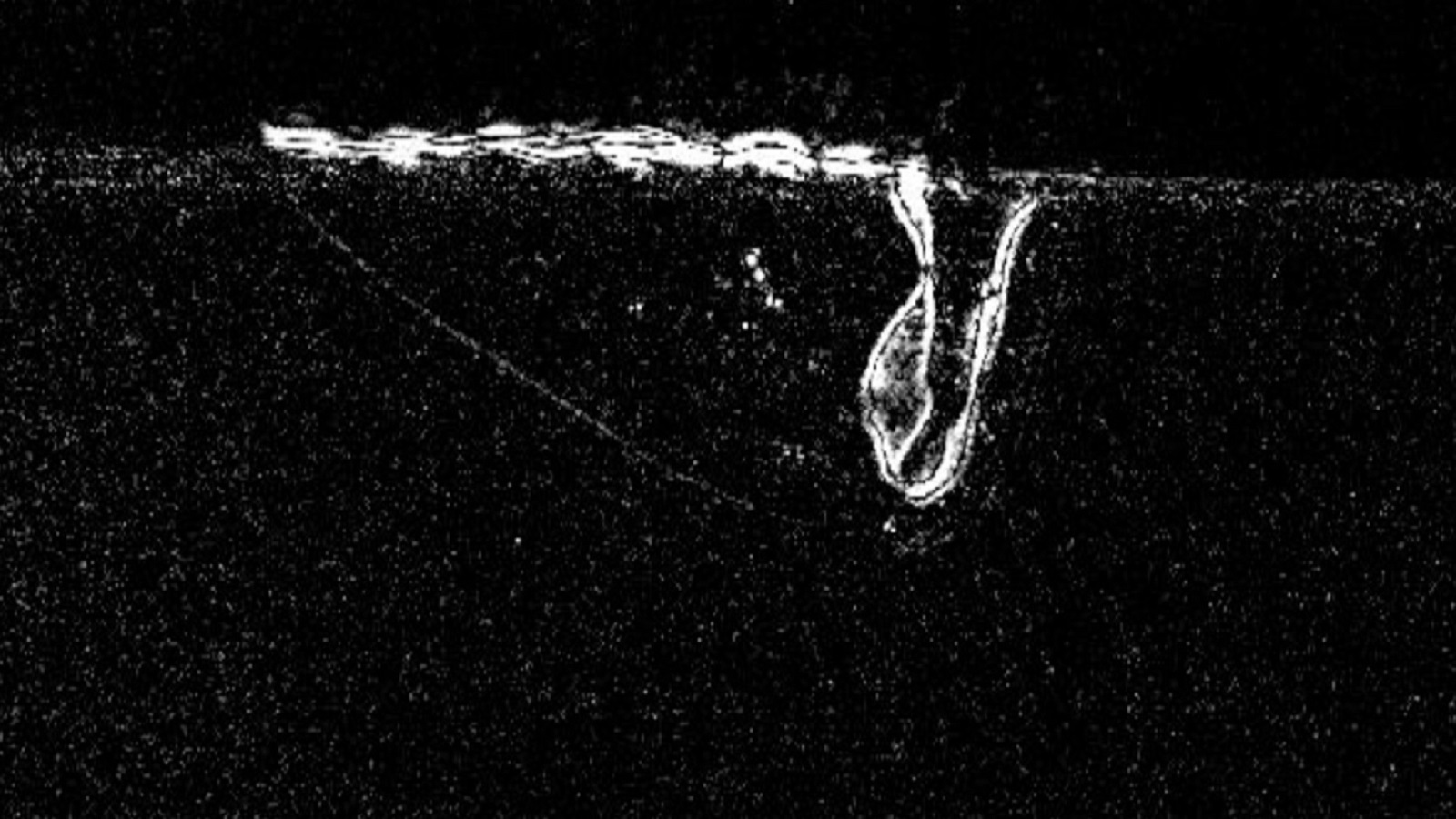Additive manufacturing’s big advantage is the convenience of fabricating geometrically complex parts. Need to quickly design and build a new engine component for an airplane? Fire up the 3D printer and make one. But with that convenience often comes a drawback: 3D-printed parts are not as durable as those crafted through traditional manufacturing processes, and won’t hold up under repeated stresses over time.
A team of scientists may now have the answer to that problem. Even better, their pivotal discovery does not require redesigning and updating 3D-printing machines. Researchers say it can be done with the technology we already have.
“One of the main challenges in 3D printing is to make it as reliable as traditional manufacturing, and if this concept could be used as an effective tool in a real 3D system, that would be a giant leap forward for the additive manufacturing industry.” — Kamel Fezzaa, XSD, Argonne National Laboratory
Additive manufacturing, commonly called 3D printing, has been a reality for nearly 40 years. This process transforms computer models of, well, anything into fully realized 3D structures made of plastics, metals or other materials. As part of the process, however, microscopic pores find their way into the finished product, weakening the structural integrity. Eliminating these pores from 3D-printed metal parts is key to advancing the technology into more useful applications.
As any scientist will tell you, the first step toward fixing a problem is to get a good look at what is causing it. Researchers have been using the Advanced Photon Source (APS), a U.S. Department of Energy (DOE) Office of Science User Facility located at DOE’s Argonne National Laboratory, to study the additive manufacturing process since 2015. The APS generates intensely bright X-rays, which can penetrate into the metal parts, taking images as the metal is shaped from powder in real time.
“The APS provides a way of seeing things that we couldn’t before,” said Kamel Fezzaa, a physicist in Argonne’s X-ray Science division, who oversees the high-speed imaging program at APS beamline 32-ID-B. “Instead of using static samples after the printing is complete, we are able to see inside the process as it happens.”
That process is called laser powder bed fusion, and it involves using high-power lasers to melt and fuse powdered material together. Using a laser-and-powder setup at the APS, a team of researchers documented the formation and subsequent movement of pores — many smaller than the width of a human hair — within the melt pool. The team was led by Lianyi Chen, formerly of the Missouri University of Science and Technology and now of the University of Wisconsin-Madison, and Tao Sun, formerly of Argonne’s X-ray Science division and now of the University of Virginia.
The APS allowed them to capture 135,776 images per second, each image lasting for less than a microsecond, and the result was the most detailed look at the additive manufacturing process ever seen.
“The APS has the best capability of doing this type of study,” said Sun. “It would be impossible to do this at a lab-based X-ray source. We’re probing a highly dynamic process, and the APS offers us nanosecond-level time resolution.”
What this research team found surprised even them. In a paper published in Nature Communications, the group described the three forces acting upon pores within the melt pool: buoyancy, which should force the gas up and out of the melt area; melt flow drag, which should swirl the gas around within the molten pool; and thermocapillary force, which drives the pores to move along the temperature gradient.
Of these three forces, they discovered that the thermocapillary force in certain area of the molten pool exerts the most influence over where the pores ended up. The drag created by the melting liquid metal is second, which means that the natural tendency of these gas pockets to move upward and out of the melt area was countered.
“We did not expect these results,” Chen said. “As the laser strikes the material, the pores move out of the melt pool rapidly in the laser interaction area.”
The team found that it is the temperature gradient induced thermocapillary force that drags the pores out, Chen explained, so simply exerting more control over the temperature gradient during the 3D-printing process itself can move those pores outside the melt area, ensuring that the resulting metal part is pore-free.
“This is not a force that people thought about before,” Sun said. “But we can utilize this force to remove all of the pores in a printed component.”
Making use of this technique, researchers say, should be possible with existing 3D-printing equipment. Controlling the power and speed of the laser, and adjusting for different types of material, should allow manufacturers to find the right conditions to shape the thermal force as the laser is doing its work.
It would take some trial and error, Fezzaa said, but it should not require an additional device to eliminate pores from the finished product.
“This is a proof of concept,” Fezzaa said. “One of the main challenges in 3D printing is to make it as reliable as traditional manufacturing, and if this concept could be used as an effective tool in a real 3D system, that would be a giant leap forward for the additive manufacturing industry.”
This work is funded by the U.S. Department of Energy’s Kansas City National Security Campus, the National Science Foundation, and partially by Laboratory Directed Research and Development funds from Argonne.
About the Advanced Photon Source
The U. S. Department of Energy Office of Science’s Advanced Photon Source (APS) at Argonne National Laboratory is one of the world’s most productive X-ray light source facilities. The APS provides high-brightness X-ray beams to a diverse community of researchers in materials science, chemistry, condensed matter physics, the life and environmental sciences, and applied research. These X-rays are ideally suited for explorations of materials and biological structures; elemental distribution; chemical, magnetic, electronic states; and a wide range of technologically important engineering systems from batteries to fuel injector sprays, all of which are the foundations of our nation’s economic, technological, and physical well-being. Each year, more than 5,000 researchers use the APS to produce over 2,000 publications detailing impactful discoveries, and solve more vital biological protein structures than users of any other X-ray light source research facility. APS scientists and engineers innovate technology that is at the heart of advancing accelerator and light-source operations. This includes the insertion devices that produce extreme-brightness X-rays prized by researchers, lenses that focus the X-rays down to a few nanometers, instrumentation that maximizes the way the X-rays interact with samples being studied, and software that gathers and manages the massive quantity of data resulting from discovery research at the APS.
This research used resources of the Advanced Photon Source, a U.S. DOE Office of Science User Facility operated for the DOE Office of Science by Argonne National Laboratory under Contract No. DE-AC02–06CH11357.
Argonne National Laboratory seeks solutions to pressing national problems in science and technology. The nation’s first national laboratory, Argonne conducts leading-edge basic and applied scientific research in virtually every scientific discipline. Argonne researchers work closely with researchers from hundreds of companies, universities, and federal, state and municipal agencies to help them solve their specific problems, advance America’s scientific leadership and prepare the nation for a better future. With employees from more than 60 nations, Argonne is managed by UChicago Argonne, LLC for the U.S. Department of Energy’s Office of Science.
The U.S. Department of Energy’s Office of Science is the single largest supporter of basic research in the physical sciences in the United States and is working to address some of the most pressing challenges of our time. For more information, visit https://energy.gov/science.
Original post https://alertarticles.info



